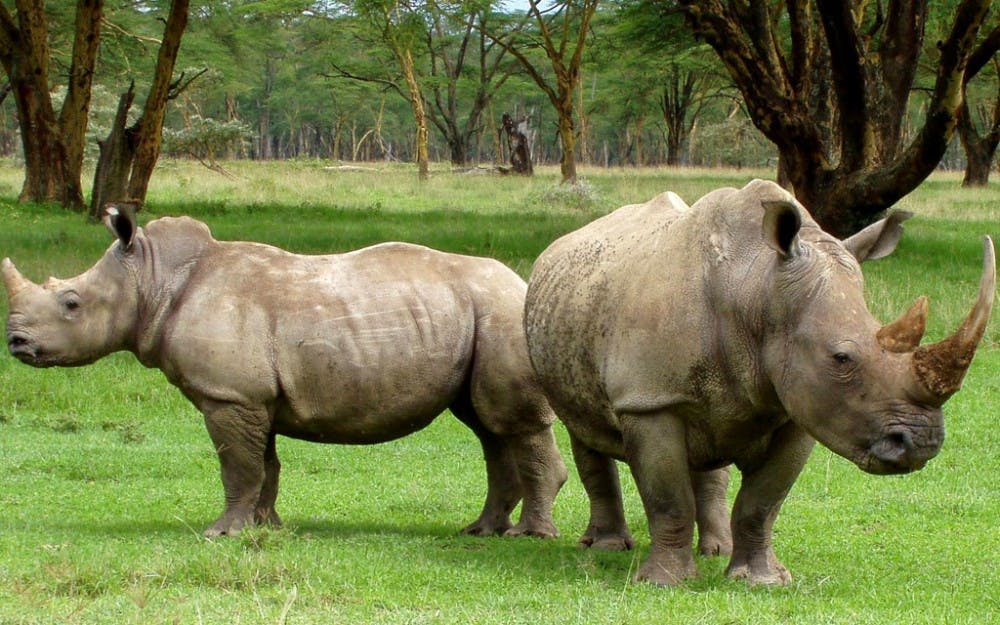According to the United Nations Environment Programme, approximately 150 to 200 species go extinct every day. While some degree of extinction is part of natural selection and evolution, studies show that this rate is over 1,000 times the natural rate, primarily because of humans. The World Wildlife Fund and other conservation organizations spend billions of dollars every year to protect endangered species, but such efforts have been ineffective for the most part, as extinction rates are climbing exponentially. With the human population increasing annually at the level it currently is, it appears that the eventual extinction of most species of animals and wildlife is inevitable — but there is a way we can reverse these trends.
Before we can determine a method to protect endangered species, we must first consider what causes certain species to become endangered in the first place. The obvious answer is that there must be some incentive to kill them, whether recreational or monetary — with the latter far outweighing the former. Take the northern white rhinoceros for instance, of which only three currently exist in the wild. Their horns are sought after by poachers because of the fact that they can be sold for over $50,000 per kilogram, more than gold, platinum or just about any other natural resource. However, the sought after keratin that can be found within these rhino horns is a material that can also be obtained from numerous other sources at a significantly lower cost, such as from cow hooves. So what made cattle into a common farm animal with a massive, stable population, while the population of rhinos has dwindled to almost nothing?
The answer lies in the domestication of one of these species, and the (attempted) conservation of the other. By making it illegal to kill animals such as the white rhinoceros for a financial gain, the governments of nations where they reside have artificially decreased the supply of their byproducts. Naturally, this decrease in supply drastically increases the price, and therefore the incentive to kill them. Scarcity of any resource, no matter its utility, increases its price and creates value — as can be seen with gold or diamonds — which also explains why keratin from rhinos is so much more valuable than keratin from cows. This conservation strategy creates a cycle — as regulations are placed, the supply drops further and the incentives increase, causing more poaching and even more regulation. This is clearly not the solution. I believe that the way to resolve this problem, and save the endangered species of the world, is to legalize their domestication, breeding and slaughter for monetary gain.
A single white rhinoceros bull could generate over $300,000 from its horn alone, not to mention the money which could be made from its hide, meat and bones. Making it legal to domesticate and breed them would cause their populations to increase and stabilize. In addition, a secondary effect would be that the incentive to kill those that remain in the wild would drastically drop, so the non-domesticated population would rise as well. An example of this can be seen with the bison population here in America, which had dropped from 30 million to around 1,100 by the late 1800s. After domestication was legalized though, the population has since rebounded to over 500,000, including a wild population of about 30,000.
One could argue that the value of their byproducts would go down as the supply goes up, thus making it unprofitable to breed them, which is true to some extent. However, the cost of breeding would also decrease as you start to breed them in greater numbers because of economies of scale. A research study by the National Institute of Health proved that the unit cost in animal agriculture decreases as the size of farms increases, though it’s worth noting that these decreases start to dissipate much quicker than usual. Regardless, this proves there could indeed be long-term domestication of various endangered species without a significant decrease in profitability.
It’s probably too late for the white rhinoceros and other species whose numbers have dwindled too low for them to feasibly recover. In addition, many species face extinction not just because of poaching, but because of deforestation and urbanization. Conservationists are fighting an uphill battle by attempting to convince people that saving endangered animals a world way is worth their time and effort, while the incentives for poachers continue to skyrocket. The only way to truly motivate people to protect these animals is to harness the capitalistic powers of supply and demand and apply them to this market. As things currently stand, the extinction of thousands of species is inevitable in the near future, and while this solution may not be perfect, it would certainly prolong the survival of these species in the foreseeable future.
Milan Bharadwaj is an Opinion columnist for The Cavalier Daily. He can be reached at opinion@cavalierdaily.com.







